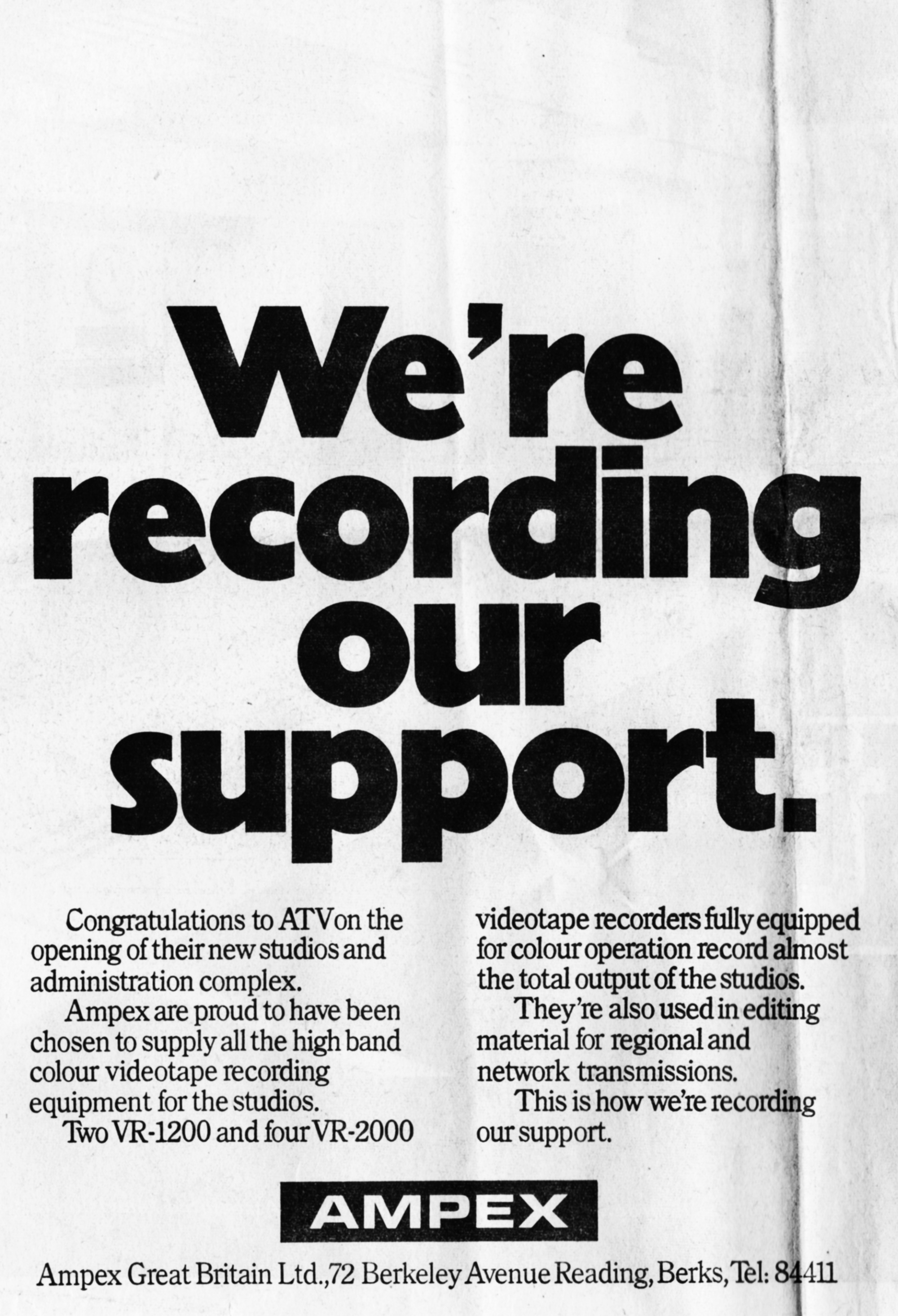A MASSIVE capital outlay has gone into equipping the studios at ATV Centre for full colour operation.
For colour is costly. Each of the 12 colour cameras used In the studios cost £17,500. A videotape machine (and ATV has six of them in Birmingham) costs around £60,000.
In all, ATV has spent well over £2m on equipping for colour. The company considers the equipment being used the finest available in the world.
One of the most interesting features of the studios is a computer-type lighting system which can memorise any particular lighting scene — and reproduce it again at the touch of a button. A hundred different lighting combinations are available in the main studio.
Studio 1 has a working area of 93ft. by 50ft., excluding a 16ft-deep pull-back area under the control room. It has four EMI cameras and an audience seating capacity of 192.
Studio 2 has four EMI cameras and there are three more in Studio 3. The small presentation studio in the entire contains another EMI camera.
Outside broadcasting units now operate from the Centre, There are two units, each with four Philips colour cameras, ready to go out on location.
When out, ATV engineers can either use a Post Office circuit to get the pictures back to base or, if a circuit is not readily available, set up special microwave links.
Monitor
Other production facilities include a producer viewing room next to studio control. This room has a colour monitor.
There are also film editing rooms with dubbing and transfer facilities, a film theatre and two film preview rooms.
Caption scanners in the Centre can convert white lettering on a black background into full colour lettering and background.
The highly expensive telecine equipment — the machines which enable filmed material to be shown on the screen — were specially adapted by the manufacturers for ATV’s own requirements so that the best possible “colour balance” could be obtained.
Mr. Gerry Kaye, ATV’s Head of Engineering, stresses that in spite of the complicated nature of colour operations the company has kept the studio set-up as simple as possible.
“We believe that simplicity means reliability,” he said. “With the equipment we have here this Centre can produce the best possible colour results.”
The studios “float” on a platform of sound-insulating material.
The first presentations to come from them were made in mid-1969 with continuity announcements. The three studios were then gradually brought into full use.
Now more than 10m. viewers in an area extending from Stoke-on-Trent in the north to Newbury in the south and from Montgomeryshire in the west to The Fens in the east can see ATV programmes from the centre in the heart of Birmingham.
Pictures go out from the Centre to the transmitters at Lichfield (which handles black and white 405-lines) and Sutton Coldfield (625 lines and colour).

